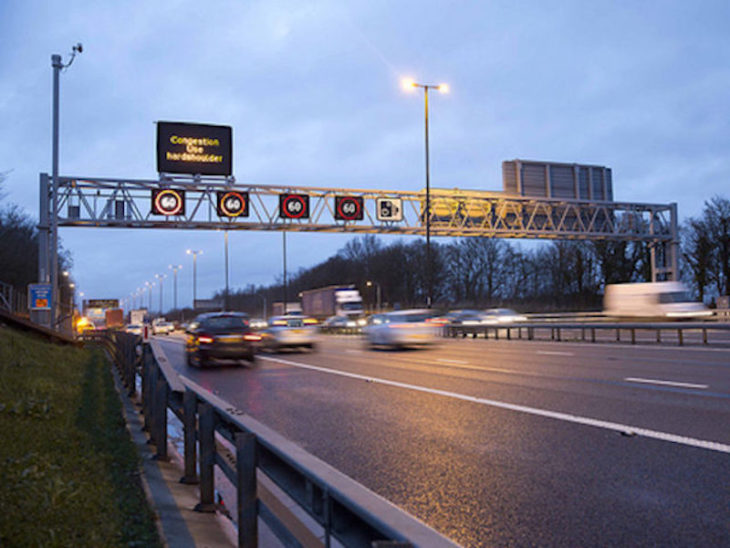More than two-thirds (68%) of drivers in England say that removing the hard shoulder on ‘all lane running’ motorways compromises safety; part of latest research showing drivers’ fears over such schemes.
Published weeks after Boris Johnson’s government had announced a review of smart motorways – Transport Secretary Grant Shapps said at the time “we know people are dying on smart motorways” – research for the 2019 RAC Report on Motoring questioned motorists familiar with driving on an ‘all lane running’ smart motorway and found seven in 10 (72%) are worried about not being able to reach an emergency SOS area if they break down.
Meanwhile six in 10 drivers (59%) think the distance between SOS areas, at up to 1.6 miles (2.5km) apart on permanent ‘all lane running’ smart motorways, is too great, with only 13% disagreeing. This echoes the RAC’s own concerns, with the organisation having repeatedly called for more SOS areas to be built so drivers are never more than a mile away from one.
Furthermore, only half of drivers who have driven on an ‘all lane running’ smart motorway (51%) say they know what to do if they break down and are unable to reach a refuge area. Official government advice in such situations is for drivers to move the vehicle, if it can be driven, to the hard shoulder (where available) or as close as possible to the nearside (left hand) verge or other nearside boundary or slip road.
And trust in Highways England’s ability to detect stationary vehicles in running lanes and respond accordingly with ‘red X’ lane closures is debatable, with half of drivers (54%) surveyed agreeing with this statement while a fifth (20%) disagreed.
Worryingly, of those drivers familiar with driving on ‘all lane running’ schemes, 62% said they felt they abided by red X lane closures, but almost one-in-five (18%) claimed they did not, despite Highways England having warned it’s about to start using enforcement cameras to catch offenders.
Last month saw the AA publish data indicating that seven out of 10 drivers (71%) say all lane running motorway schemes feel more dangerous than a traditional motorway as it called for a review.
However, Highways England refuted the AA’s findings, saying that feedback from road users show a clear majority feel confident driving on a smart motorway, and that they are safer and improve journey times.
Commenting on the RAC’s research, a Highways England spokesperson said: “The Transport Secretary has asked the Department for Transport to carry out, at pace, an evidence stock-take to gather the facts about smart motorway safety. We are committed to safety and are supporting the Department in its work on this.”
Head of roads policy Nicholas Lyes said: “We have consistently highlighted our concerns about this type of smart motorway to the Government, MPs and Highways England so we hope these findings add further support to our calls for action.
“We are calling on the Government to ensure the latest stopped vehicle detection technology is retrofitted on all sections of smart motorway as a matter of urgency and for more SOS areas to be built so drivers are never more than a mile away from one. We would also like to see these measures included in all smart motorway schemes that are currently being built or planned so we have a nationally consistent standard.
“We, and drivers generally, understand there is a need to increase capacity on our motorway network with traffic levels forecast to grow. However, this should only be done using the latest design features and technology so schemes are not only as safe as possible, but also make motorists feel safe driving on them. Sadly, only a fraction of ‘all lane running’ smart motorways operating today have SOS areas spaced at intervals of up to a mile and stopped vehicle detection technology installed.
“It is imperative drivers have the confidence to know they will be protected from traffic in the event they suffer a breakdown in live lane on ‘all lane running’ motorway.”











































